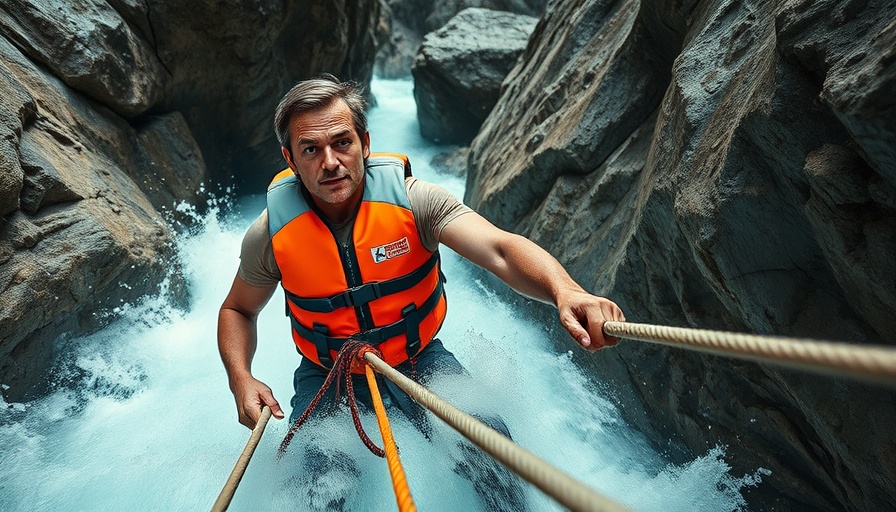
A Tale of Survival: The Reality of Whitewater Rafting
On November 22, 2024, pristine adventure turned tragic for Valdas Bieliauskas, a seasoned Lithuanian whitewater rafter. With 50 years of experience under his belt, he and his friends aimed to raft on every continent, making Tasmania their grand finale. However, this trip took an unexpected and harrowing turn during an attempt to scout the treacherous Coruscades rapids on the Franklin River.
The Fatal Slip that Changed Everything
While navigating the rocky terrain, Bieliauskas slipped, falling into the frothy rapids. In a surreal twist of fate, his leg was wedged between two rocks, trapping him in a perilous situation that set off a relentless 20-hour rescue operation. Captured through the lens of a drone and on the ground, this incident highlights not just the immediate physical dangers but also the profound emotional toll on him and his friends.
A Race Against Time: The Rescue Effort
As the hours stretched on, rescuers struggled to free Bieliauskas without causing further injury. Rohan Kilham, the paramedic on-site, faced a heartbreaking moment when he couldn’t assure Bieliauskas’s friends that he would survive. “I remember the Lithuanian doctor sort of asking… he’s dead isn’t he? And I couldn’t say yes but I… I definitely couldn’t say no,” recalled Kilham. This emotional gravity reflected the struggle between hope and harsh reality within rescue scenarios.
The Unthinkable Decision
After battling against the currents and the clock, the team made a devastating decision: an above-the-knee amputation was necessary to save Bieliauskas’s life. This was a moment that few could fathom experiencing. Documented in the Australian Story documentary titled The River, this scene shed light on not only the physical dangers of rafting but also the emotional resilience and quick thinking required during extreme circumstances.
A Community United Through Adversity
This incident has ignited important conversations within the adventure sports community about safety protocols, risk management, and the dire consequences of challenging nature’s unpredictability. As water sports enthusiasts, we often face the call of adventure, but this is a poignant reminder of the balance between thrill-seeking and self-preservation.
The Lifesaving Lessons Learned
For those passionate about water-based activities, it’s essential to understand the risks that accompany adrenaline-filled excursions. This story serves as a catalyst for developing better safety measures, such as adequate scouting before activities and emergency readiness plans that prioritize group safety over individual eagerness to tackle challenges.
A New Perspective for Adventure Seekers
This extraordinary account pushes the limits of what we consider the essence of adventure. It’s not merely about conquering the challenging rapids, but about acknowledging and respecting nature’s power. The bravery of Bieliauskas and his friends showcases an unbreakable bond formed through shared experiences, hardships, and triumphs.
Join the Conversation
As the adventure sports community continues to evolve, we must share stories like that of Valdas Bieliauskas. His experience is not just a cautionary tale; it serves as an inspiration for water sports enthusiasts everywhere. By learning from these incidents, we can build a safer, more supportive environment for adventurers while fostering a stronger bond through shared experiences.
Ready to explore the waters safely? Let’s equip ourselves with knowledge! Taking lessons, ensuring gear is up to date, and connecting with fellow adventurers can keep us safe while still embracing the thrill of water sports.
 Add Row
Add Row  Add
Add 




Write A Comment